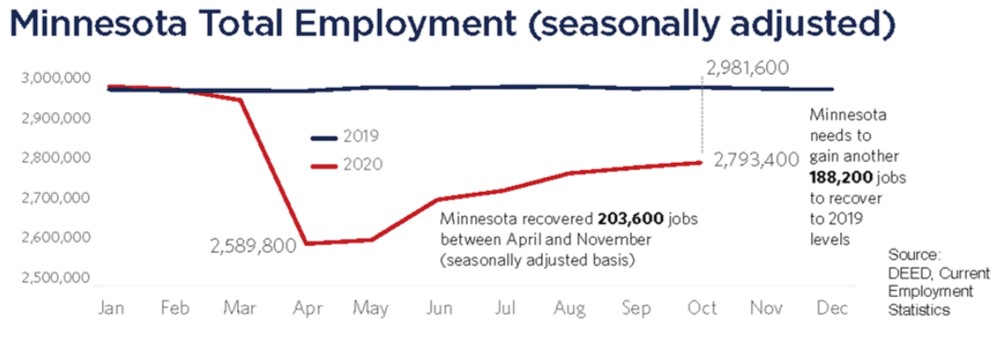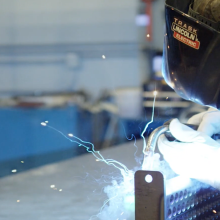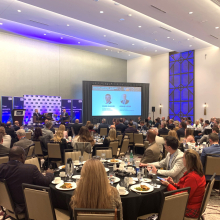Blueprint: Minnesota’s economic imperative
Restore livelihoods now, position the state for long-term growth
COVID-19 is first and foremost a public health crisis. Protecting the lives of Minnesotans remains the paramount concern for all. Yet, failure to achieve a timely economic recovery will imperil the well-being of tens of thousands of Minnesotans as well. Public health and economic recovery must go hand in hand.

Jobless claims continue to remain well above pre-pandemic levels. Thousands of college students will enter the job market in May 2021, making decisions about where to live and start their career. And thousands of small businesses remain at risk of permanent closure. The scale and nature of these challenges require a thoughtful, pragmatic response from every segment of our society, private sector businesses and policymakers:
The first economic imperative is to stabilize at-risk businesses.
Their viability directly translates to economic activity, employment, community sustainability and generating revenues that benefit state and local government and the core services the public sector provides.
The second imperative is to take strategic actions to accelerate economic recovery in the short term.
Making smart investments in tax competitiveness, entrepreneurship and innovation, statewide broadband/connectivity, and child care accessibility can help spur recovery now and yield continued returns in the years to come.
Action needed to spur Minnesota’s economic recovery
Economic recovery must be the priority for the 2021 legislative session. Policymakers must intentionally help businesses remain solvent, rebuild and resume operations and help individuals who have lost their jobs find employment.
Until a vaccine is widely available, sectors of the economy may continue to operate at a reduced capacity, putting more businesses at risk of permanent closure or permanent layoffs. Permanent closures of businesses will likely result in longer-lasting unemployment. Studies of past recessions have found that people with permanent layoffs earned 17.5% less at new jobs once they found reemployment.
The primary focus must be to target relief to businesses that have been hardest hit by COVID-19 through no fault of their own, such as those in hospitality, fitness and event industries. Small and mid-sized businesses at greatest risk of closure in the immediate future should be a priority. Policies to help businesses remain viable and prevent a permanent closure will greatly speed Minnesota’s economic recovery. The other imperative is to “do no harm” with additional cost burdens and mandates that will result in additional stress and costs on employers that are doing their best to keep their doors open and people employed.







